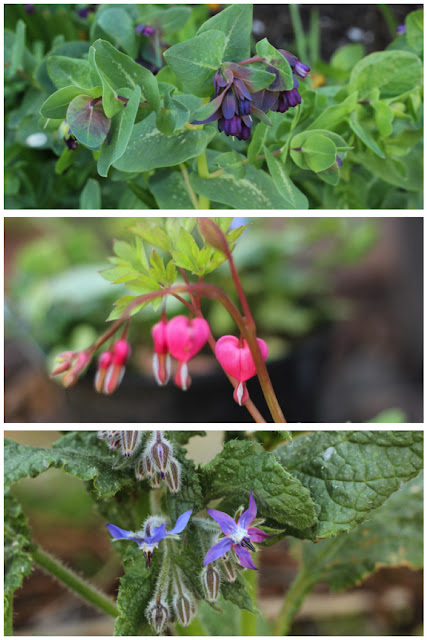 |
| Regular as clockwork - blossom on the plum tree. |
Tonight the clocks go forward in the UK, heralding the start of British Summer Time. Tomorrow I'll wake as usual at 7am and change the hands on all the clocks to 8am and feel that the day has stolen a march on me. It's all very unsettling but, despite my curmudgeonly attitude, at least I'll feel one step closer to summer!
 |
| The first quince blossom this year |
Now that April is only a day or two away, the garden is really coming alive. Mostly with flowers, to be fair, but when those flowers are sparkling on the pear and plum trees, you know you can start to get excited. There's even one small blossom bud on the quince tree planted at the northern end of the veg patch; the other quince (a patio variety in a pot) has never flowered and I'll be pleasantly surprised if I see any blooms this year. I'm not sure why it's never flowered but no flowers means no fruit. More feeding is needed I guess.
And so to rhubarb. Choosing the best cultivar is key; I've already indulged in some delicious stewed rhubarb a few weeks ago thanks to a friend who grows a large patch of Timperley Early and, serendipitously for me, doesn't like rhubarb! Regular readers may remember that I got rid of my Glaskins Perpetual clump last year. It was too big and too green - but fantastic if you want stems for most of the year. I like a nice red stem (a must for fruit fools or stewed fruit) so pinned my hopes on a new Siruparber plant from Lubera in Switzerland as well as the two Red Champagne plants struggling to survive under the apple trees.
 |
| Red Champagne rhubarb - and a matching tulip |
In the past few weeks I'd convinced myself that the Siruparber was a goner as there was nothing to indicate where it had been last year, but this week I've spotted a couple of tiny leaves poking up and quickly put a wire basket over the top for protection against fox cubs. The Champagne plants have produced a towering flower stem in the past, (not a good thing for rhubarb), clearly demonstrating that they are Not Happy. And this is where you learn by doing - I'd read that rhubarb could be grown in light shade ... or apparently not in this case. I have two Champagne crowns so one will be carefully dug up and moved into the light - or as much as it can get with a four storey block of flats in close proximity on either side of the veg patch. (The patch gets around 6 hours of sun on a good day, which is fine for most veg and annuals.)
 |
| Cerinthe / Honeywort Lamprocapnos / Bleeding Heart Borage / Starflower |
I do think colour is so lush in spring - I have primulas, cowslips, daffodils, forget-me-nots, tulips and muscari (grape hyacinths) to keep bees happy. I've only seen a couple so far but they'll buzz over once they know the nectar bar is open. This year self-seeded Cerinthe (honeywort) and Borage are blooming under the fruit trees - perfectly placed for pollinators - and one or two calendula plants have over-wintered. I don't even mind that the purple sprouting broccoli has finished and started to flower. It's possibly the prettiest time in the veg patch and all part of the circle of life.
 |
| Last year's tulips return. Did I put those colours together? |




